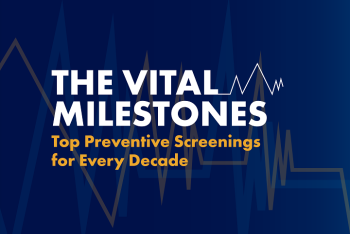Health check-ins are for every age, milestone, and season of life. Explore Inspira Health's top...
Read More

Of the 34 million Americans currently diagnosed with diabetes in the United States, about 90% of these individuals have type 2 diabetes, according to the Centers for Disease Control and Prevention (CDC). However, if we’re not careful as a country, that number could grow—almost 1 in 3 people in the U.S. have prediabetes, a condition that often leads to type 2 diabetes. Here is what you need to know about risk factors for diabetes and ways to prevent it.
“Diabetes is when the bloodstream has an overabundance of glucose—a form of sugar derived from carbohydrates that give us energy—from a lack of insulin, which is a hormone that acts as the gatekeeper between the glucose in the bloodstream and the cells in our body,” said Jenine Vecchio, M.D., Endocrinologist at Inspira Medical Group Endocrinology in Sicklerville. “Normally, the body does not produce enough insulin or utilize the insulin it produces effectively. The pancreas can detect how much glucose has been ingested and produce the appropriate amount of insulin needed to phase it into our cells. However, someone with diabetes can’t perform this process because the pancreas either cannot create insulin or can’t create properly functioning insulin.”
The three main forms of diabetes are:
Type 1 Diabetes
Otherwise known as “juvenile diabetes,” this form is predominantly seen in children and is characterized by the immune system attacking itself and killing the insulin-producing cells. It is less common than type 2 diabetes.
Type 2 Diabetes
With type 2 diabetes, the glucose cells do not utilize the insulin effectively to bring down the sugar level. This resistance causes blood sugar levels to rise, ultimately catalyzing this condition.
Gestational diabetes
This form develops in pregnant women as a result of the body secreting additional hormones that act as a barrier to insulin. Because of a lack of effective insulin, this resistance increases blood sugar levels, thus causing diabetes. Having gestational diabetes during pregnancy increases your risk of developing type 2 diabetes later.
“While there is no known way to prevent type 1 or gestational diabetes, it is possible to prevent type 2 diabetes,” said Dr. Vecchio. “Knowing the risk factors associated with each form is the first step to improving your risk profile.”
While the risk factors associated with type 1 diabetes are family history and young age, there are several risks linked to developing type 2 diabetes, such as obesity, advanced age, family history, inactive lifestyle, previously having gestational diabetes and having prediabetes.
“Prediabetes is when the body has above average blood sugar levels, but they aren’t elevated high enough to be classified as type 2 diabetes,” said Dr. Vecchio. “That is why taking the appropriate preventive steps is so critical.”
Lowering your risk starts with making a few small lifestyle changes. For example, drinking more water, limiting your sugar intake, increasing your physical activity and maintaining a healthy weight are just a few ways to help prevent this condition.
If you have a family history of diabetes or begin to experience any of the characteristic symptoms such as frequent urination, increased thirst, sudden weight loss, constant exhaustion or blurred vision, speak with your health care provider right away.
“Diabetes can cause long-term complications, but with the right tools and proper management, you can lead a happy life,” said Dr. Vecchio. “Treating diabetes is different for every patient, but creating your management plan starts with talking to your doctor. If you believe you might be a high-risk patient, don’t hesitate to take action." Book an appointment with Dr. Vecchio or your primary care physician or call 1-800-INSPIRA.

Health check-ins are for every age, milestone, and season of life. Explore Inspira Health's top...
Read More
Understanding diversity in relationships and identities is crucial for the next generation. Inspira...
Read More
Inspira Urgent Care Doctors advise staying informed about dangerous pranks and avoiding jokes...
Read More
The material set forth in this site in no way seeks to diagnose or treat illness or to serve as a substitute for professional medical care. Please speak with your health care provider if you have a health concern or if you are considering adopting any exercise program or dietary guidelines. For permission to reprint any portion of this website or to be removed from a notification list, please contact us at (856) 537-6772